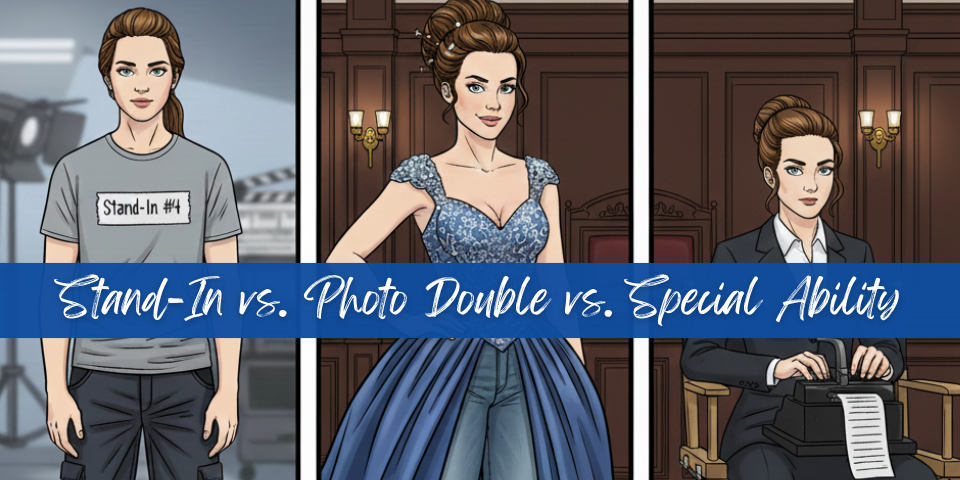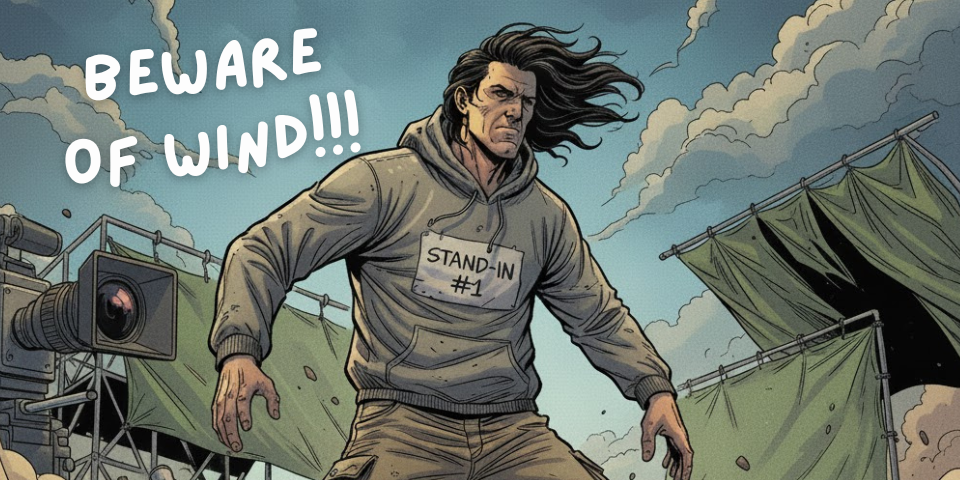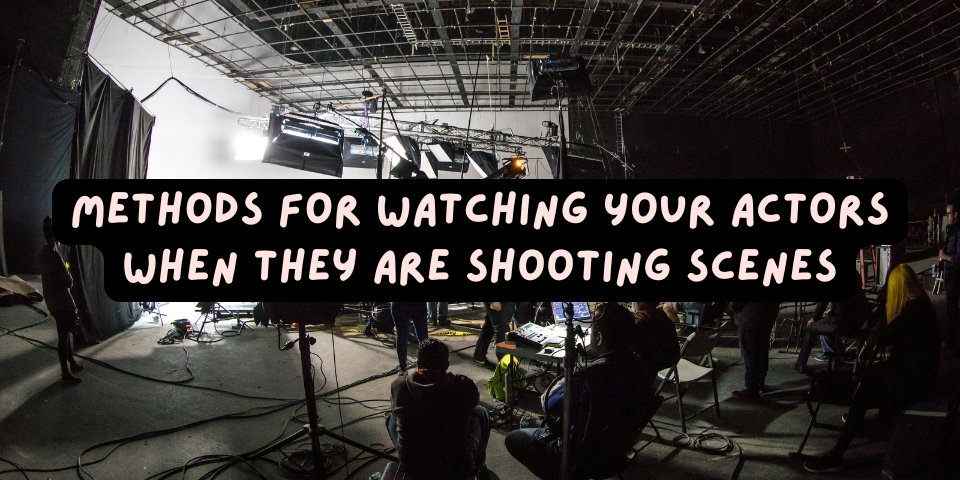As the FAA swiftly authorizes exemption requests for commercial drone photography (covered extensively in this post on Stand-In Central), stand-ins in television and film may find that sooner or later they are standing in in scenes shot by drones.
Marking rehearsals involving drones may be spread out over a wide range of territory given the ability of drones to cover a large distance at many heights. Also, since drones may pick up more land in their shots and be seen in shots, marks may not be laid down for stand-ins to use to accurately navigate the blocking positions their actors take in marking rehearsals.
What follows are tips for the stand-in for figuring out your actor’s marks during marking rehearsals of drone photography shots.
A Note about Marking Rehearsals
Usually, marks are laid down during marking rehearsals so that the crew knows the precise locations of the actors at particular points in the scene.
During the setup of a shot, stand-ins move from mark to mark to help the camera crew understand the camera positions of the shot.
By the time the stand-ins leave set for the actors to take their marks, the camera crew may have removed or minimized the marks if they are visible in the shot.
Marking Rehearsals for Drone Shots
Marking rehearsals for drone shots may be a bit different than typical marking rehearsals for grounded cameras.
A shot in a drone scene may require especially precise actor blocking. However, it may be hard for the camera crew to mark actors in a marking rehearsal for a drone shot, especially if the actors are scattered about and far away from each other in the scene.
Also, it may be impractical to lay down marks given that the drone may film the marks. In such a case, as a stand-in, knowing your actor’s position becomes extra critical because there may be no marks left to show you where your actor stood or landed in the rehearsal.
Identify Landmarks as Marks
Keep a look out for landmarks during the marking rehearsal that might indicate where your actor stood relative to set dressing in the shot.
If you remember where your actor was relative to a tree, a building, or some other landmark, you may have a good sense of where to stand should a camera assistant be unable to mark where your actor stood.
Note that on a set, some landmarks may be movable and affect where your mark is located.
Solid Landmarks
A solid landmark is immovable, so it isn’t possible to cheat the position of the landmark. A rooted tree is an example of a solid landmark.
When you figure your marks relative to a solid landmark, you can precisely figure out where you actor stood when you go to mark a scene or rehearse a new setup. In other words, when figuring out your mark relative to a solid landmark, you can figure out an absolute mark. You can know absolutely where your actor stood.
Liquid Landmarks
A liquid landmark is movable, so it is possible to cheat the landmark. A potted tree dressed into a shot is an example of a liquid landmark. It is possible to move it to cheat the position of the tree in the shot.
When you figure your marks relative to a liquid landmark, your precise ground position may change should the liquid landmark change. That is, when figuring out your mark relative to a liquid landmark, you can figure out only a relative mark. In other words, you can only figure out where your actor stood relative to the liquid landmark.
Some Solid Landmarks Are Actually Liquid
To many stand-ins’ surprise on set, some landmarks may be liquid (movable) when it wasn’t thought possible to move them.
For example, a wall — which might be thought of as a solid landmark — may be built to “pull,” which would make it liquid. If you figured out your actor’s mark relative to this wall, you might be surprised you can’t locate your actor’s mark when the wall is pulled.
Positioning Yourself in Marking Rehearsals for Drone Shots
In general, it is good advice during a marking rehearsal to take note of where the DP is standing as you watch the scene, so that you can see in general what the DP is seeing in terms of blocking in order to know what positions are important to the scene.
That advice may still be good for marking rehearsals for drone shots. Another bit of advice would be to stand in the vicinity of the actor for whom you are standing in — especially if the drone shot covers a wide range of territory.
For example, in a marking rehearsal for a drone shot, if the DP is far away from your actor who is behind a tree 500 feet away, you may want to position near the DP so that you can see whether the exact position of your actor matters to the shot.
Or, you may want to position near your actor (say, 90 feet away from the tree) so that you can see the absolute position of your actor relative to the solid landmark.
Keep in mind that the 1st AD or 2nd 2nd AD may ask you to watch the scene from a particular vantage, so it may not be possible to know the precise blocking of your actor. In such a case, simply position yourself as best you can to take in your actor’s blocking.
Be Aware of Safety Hazards When Shooting Drone Scenes
Should you find yourself around a working drone on set, be sure to know about the hazards and safety concerns so that you may protect yourself as a stand-in. Production may not realize the unique safety hazards of working as a stand-in in scenes shot by drones.
Stand-In Central has created this article for review when you are standing in in drone shots:
The Hazards of Drones and Other Remotely Piloted Aerial Cameras When Working as a Stand-In
Have you watched marking rehearsals for drone shots? Do you have additional advice for the stand-in when working in drone shots? If so, share below!






Leave A Comment